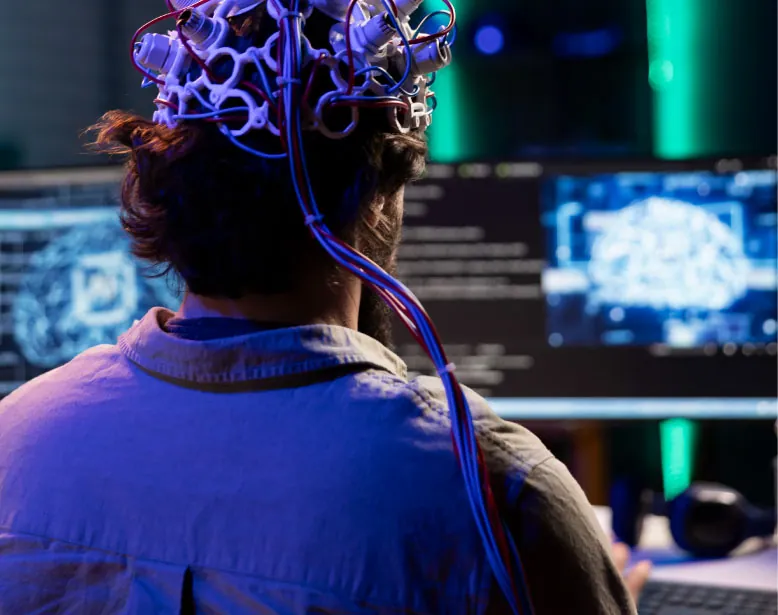October 8, 2025

Software Development Outsourcing
Recruitment Authenticity: Why It Matters and How to Guard It
Recruitment Authenticity: has become a critical factor for every organization that values trust, transparency, and performance. With the rise of remote work, artificial intelligence, and global talent acquisition, companies face growing challenges verifying who candidates truly are.
This post explores what recruitment authenticity means, why it is under threat, the risks of ignoring it, and how to build a hiring process that guarantees authenticity from start to finish.
What Is Recruitment Authenticity
Recruitment authenticity refers to the degree of truth and consistency between a candidate’s identity, skills, and background, and what they present during the hiring process. It ensures that the person you hire is the same person you evaluated.
Recruitment authenticity covers several layers:
- Identity authenticity: confirming that the individual is real and not using someone else’s credentials.
- Credential authenticity: ensuring that education, certifications, and work history are valid.
- Performance authenticity: verifying that skills demonstrated in assessments reflect real ability.
- Reference authenticity: confirming that references are genuine and correspond to real employers or colleagues.
When these factors align, the hiring process achieves recruitment authenticity. When they fail, the company risks fraud, security breaches, and loss of trust.
Why Recruitment Authenticity Is at Risk
Recruitment authenticity is harder to maintain today for several reasons.
1. The rise of remote and global hiring
More companies now hire across countries and time zones. This global approach increases efficiency but removes in-person verification, creating room for identity fraud. Recruiters must rely on digital tools to confirm who candidates are.
2. Fraud and impersonation
Identity fraud in recruitment is growing rapidly. According to First Advantage, the number of fraudulent applications in technology roles has tripled since 2022.
Scenarios include candidates using stolen identities, fabricated references, or even hiring proxies to attend interviews.
3. Artificial intelligence and deepfakes
AI tools make it easier for bad actors to create fake resumes, generate realistic photos, and even simulate live interviews. Incode Technologies reports that deepfake-based job fraud increased by 37 percent in 2024.
4. Job scams and fake applications
The Identity Theft Resource Center recorded a 118 percent rise in fake job postings and offers in 2023. The Federal Trade Commission estimated over 500 million dollars in losses from job-related scams in 2024. These scams often involve falsified identities that bypass basic screening.
5. Volume and speed pressures
Recruiters face higher volumes of applicants and shorter hiring timelines. The faster the process, the greater the chance of skipping verification steps.
6. Weak or inconsistent verification systems
Not all companies use standardized methods to validate identity or credentials. Some rely on trust or surface-level checks, leaving gaps that skilled impostors exploit.
The Cost of Ignoring Recruitment Authenticity
Neglecting recruitment authenticity can damage a business in several ways:
- Security breaches: Impostors can gain access to sensitive systems or client data.
- Financial loss: Hiring, onboarding, and training a fraudulent employee wastes resources.
- Legal consequences: Hiring under false credentials may violate compliance requirements.
- Brand damage: Clients and partners lose trust in organizations that fail to verify hires.
- Team morale issues: Genuine employees may feel demoralized when fraudulent behavior is discovered.
A single compromised hire can create years of operational and reputational fallout.
Statistics That Highlight the Urgency
Recent studies emphasize how fragile recruitment authenticity has become:
- HireRight (2025) reports that 75 percent of employers found inconsistencies in candidate backgrounds during screening.
- Gartner (2024) predicts that one in four global candidate profiles could be fraudulent by 2028.
- Checkr (2025) found that 31 percent of hiring managers have interviewed candidates later found to be using false identities.
- LinkedIn (2025) observed that 85 percent of recruiters found resume exaggerations or false claims.
- TechRadar Pro (2025) revealed that employers lose thousands of dollars each year to fraudulent hires, and most feel unprepared to detect these cases.
These numbers demonstrate that recruitment authenticity is not a theoretical concern but a measurable business problem.
Building Recruitment Authenticity: A Practical Framework
To protect against identity fraud and ensure genuine hires, companies can adopt an authenticity-focused recruitment framework.
Verify identity from the beginning
- Request official government-issued identification such as a passport or national ID.
- Use verification software that detects document tampering and confirms validity.
- Require live verification. Ask candidates to show their ID during a video call.
- Confirm facial match between ID photo and live video image.
Early identity checks help establish authenticity before any offer is made.
Conduct live interviews, not recordings
- Always hold at least one live video interview with the candidate’s camera on.
- Ask spontaneous questions that cannot be pre-recorded.
- Observe facial expressions, gestures, and reaction time.
- If something seems inconsistent, cross-check against previous interviews.
Video interviews add a human validation layer that supports recruitment authenticity.
Validate credentials and references
- Contact universities, certification bodies, and previous employers directly.
- Use independent verification services for academic records and licenses.
- Ask references detailed, situational questions to confirm real collaboration.
- Investigate LinkedIn and online portfolios to ensure consistency.
Confirming the truth of resumes and references builds the factual backbone of recruitment authenticity.
Secure communication channels
- Send all communications from official company domains.
- Avoid using personal emails or unsecured messaging platforms for sensitive exchanges.
- Store candidate documents in encrypted systems.
- Maintain clear records of all interactions for audit purposes.
A secure communication system prevents impersonation or data manipulation during the hiring process.
Use behavioral and technical checks
Recruitment authenticity extends beyond paperwork. Technology can identify suspicious behavior patterns:
- Analyze login consistency and IP locations between interview sessions.
- Detect sudden changes in device type or geolocation.
- Use plagiarism and content authenticity tools for written or code-based tests.
- Flag anomalies such as identical portfolios used by multiple applicants.
These data-driven insights strengthen recruitment authenticity by catching subtle deception patterns.
Confirm authenticity at onboarding
- Before granting access to systems, revalidate the employee’s identity and credentials.
- Compare submitted documents to onboarding data.
- For high-risk roles, include a short verification call during the first week.
- If remote, request a quick live confirmation via secure video.
This last step ensures the person joining the company is the same one who was vetted and approved.
Ongoing Monitoring for Recruitment Authenticity
Recruitment authenticity should not end at hiring. Continuous validation can detect identity misuse or proxy work.
- Access monitoring: Review device patterns, VPN usage, and logins.
- Performance evaluation: Track deliverables against demonstrated skills.
- Feedback loops: Encourage managers to report inconsistencies between interviews and performance.
- Annual re-verification: For critical positions, refresh identity verification each year.
Monitoring maintains authenticity over time and strengthens organizational trust.
Integrating Recruitment Authenticity with AI
Artificial intelligence can both challenge and support recruitment authenticity. The right integration can dramatically improve hiring reliability.
How AI Helps
- Document verification
AI systems can read, analyze, and detect forged or altered documents faster than humans. - Biometric matching
Face recognition models can match live video to ID photos, confirming candidate presence. - Anomaly detection
AI can flag inconsistencies across data points, such as mismatched locations or conflicting credentials. - Fraud pattern recognition
Machine learning identifies recurring fraudulent behavior based on historical data.
How to Use AI Responsibly
- Maintain human oversight to avoid over-reliance on automation.
- Audit AI tools regularly for accuracy and bias.
- Communicate openly with candidates about data usage and privacy.
- Combine AI with manual review for sensitive or high-stakes roles.
Used wisely, AI enhances recruitment authenticity instead of undermining it.
The Human Factor in Recruitment Authenticity
While technology is vital, people remain central to maintaining recruitment authenticity.
Recruiters and hiring managers should:
- Develop strong interviewing skills focused on behavior and storytelling.
- Watch for hesitation, vague answers, or inconsistent narratives.
- Keep detailed notes on each candidate interaction.
- Follow structured evaluation systems to reduce errors and favoritism.
Human intuition combined with data verification produces the most reliable outcomes.
Measuring Recruitment Authenticity Success
To evaluate progress, track these metrics:
- Percentage of hires passing full authenticity verification.
- Rate of discrepancies found between application and verification stages.
- Time and cost per verification versus risk avoided.
- Candidate drop-off at verification steps.
- Number of confirmed fraud attempts prevented.
These indicators reveal how effectively your recruitment process protects authenticity.
Overcoming Common Barriers
Achieving recruitment authenticity can face obstacles, but each has solutions.

The Role of AI in Recruitment Authenticity
AI can support recruitment authenticity when used ethically.
- Detect fake or altered documents.
- Identify repeated fraudulent behavior.
- Match video faces to ID photos.
- Analyze data anomalies across candidates.
Incode Technologies (2024) and WithPersona (2024) both highlight how AI identity verification tools are now critical for safe, scalable global hiring.
A Real Example
A U.S. software company hiring overseas noticed inconsistencies between candidate interviews and onboarding. By introducing real-time video checks, document authentication, and automated identity validation, they cut fraudulent applications to zero within six months.
That’s the power of recruitment authenticity, it builds trust, saves time, and protects your culture.
Why Cafeto Software Focuses on Recruitment Authenticity
At Cafeto Software, we make recruitment authenticity part of every partnership.
We help U.S. companies hire verified, skilled, and compliant talent from Colombia without worrying about fake profiles or identity risks.
Our process ensures that the person you meet is the person who joins your team.
Want to strengthen your hiring process?
Book a meeting now to learn how we ensure recruitment authenticity every step of the way.
Learn about: The Changing Economics of the H-1B Visa here









